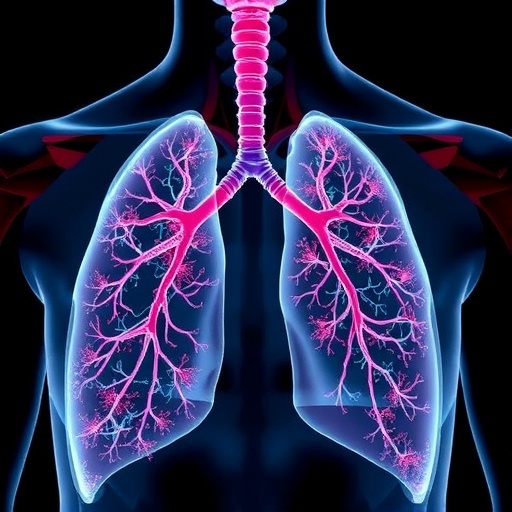In a groundbreaking effort to mitigate the alarming rates of firearm-related suicides among U.S. women veterans, particularly those serving in the Reserve and National Guard, researchers have unveiled a novel patient decision aid. This tool aims to empower these women by providing them with vital information and resources necessary to make informed decisions regarding their mental health and safety. The development of this decision aid signifies a pivotal step toward addressing the pressing mental health crisis affecting this demographic, who disproportionately face the challenges of depression and trauma.
The alarming statistics surrounding suicides among veterans underscore the urgency for effective interventions. Recent studies indicate that women veterans are at a significantly higher risk of suicide compared to their male counterparts, emphasizing the need for tailored approaches that consider the unique experiences and challenges faced by female service members. By specifically targeting the female veteran population, this new decision aid intends to serve as a beacon of hope in a landscape where vulnerability is often compounded by the struggle for recognition and support.
At the core of this initiative is the belief that accessible and clear information can lead to better outcomes. The patient decision aid compiles evidence-based knowledge regarding mental health resources, potential treatment options, and the risks associated with firearm access during critical periods of emotional distress. This approach not only fosters a deeper understanding of the psychological challenges at play but also encourages proactive engagement in the decision-making process regarding their mental health.
The development process of the decision aid involved extensive collaboration among mental health professionals, veteran organizations, and the women veterans themselves. By incorporating the voices and insights of those directly impacted by firearm suicide, the research team was able to create a tool that resonates with the intended audience. This participatory approach not only enhances the relevance of the information provided but also promotes a sense of ownership among users, increasing the likelihood of utilization.
Equipped with this decision aid, women veterans are encouraged to engage in open discussions about their mental health with healthcare providers. The tool emphasizes the importance of building trust between veterans and their healthcare teams, as well as fostering an environment where candid conversations about mental health can take place without stigma or fear of judgment. The aim is to facilitate an atmosphere where veterans feel comfortable expressing their concerns and exploring treatment options that align with their individual needs and circumstances.
Moreover, the decision aid encompasses a comprehensive overview of available resources tailored for women veterans, including mental health services, support groups, and crisis intervention hotlines. By centralizing this information, the aid acts as a crucial navigator for veterans who may feel overwhelmed by the myriad of options and decision points they encounter. This targeted support is particularly vital during times of crisis when swift and informed decision-making is essential.
As the research continues to be disseminated within the healthcare community, stakeholders are encouraged to embrace this patient decision aid as part of a broader movement toward veteran-centric mental health initiatives. The potential ripple effects of this tool could extend far beyond the individual level, inspiring systemic changes within healthcare delivery aimed at improving access to care and outcomes for women veterans.
In addition to the immediate benefits of the decision aid, there is a profound societal implication associated with its success. By prioritizing the mental health of women veterans, society can take substantial steps toward dismantling the stigma surrounding mental illness and fostering a culture that views mental health as a fundamental aspect of overall health. This cultural shift could lead to increased support for mental health initiatives, ultimately saving lives and enhancing the quality of life for countless veterans.
As the initiative progresses, ongoing assessment and refinement of the decision aid are crucial to ensure that it remains relevant and effective. Feedback from users will be instrumental in identifying areas for improvement and expansion, which may include the incorporation of additional resources or features that cater to the evolving needs of women veterans. This iterative process is emblematic of a commitment to excellence and responsiveness in addressing a complex issue.
In conclusion, the development of a patient decision aid aimed at preventing firearm suicide among U.S. women veterans represents a pioneering step forward in addressing a critical public health concern. By centering the experiences and needs of female service members, this initiative not only addresses the pressing issue of suicide but also fosters a greater awareness of the mental health challenges faced by veterans. As this tool finds its way into the hands of those who need it most, the hope is that it will empower women veterans to advocate for themselves, seek help, and ultimately lead healthier, fulfilling lives free from the shadows of crisis.
In a world increasingly aware of the mental health dilemmas plaguing our veterans, this decision aid serves as a reminder that solutions are possible. It encourages hope, education, and cooperation among individuals, healthcare providers, and the veteran community. The mission is clear: to prevent firearm suicides and ensure that no woman veteran has to navigate her mental health journey alone. The significance of this development cannot be overstated, as it paves the way for a future where comprehensive support systems for women veterans are not just aspirational, but a reality.
As the discourse surrounding veteran mental health continues to evolve, the insights gleaned from this research provide a roadmap for addressing similar challenges across various demographics. The commitment to fostering open dialogues and providing accessible resources serves as a crucial model for other areas grappling with high rates of suicide and mental health issues. By leveraging the power of informed decision-making, this initiative is poised to make a lasting impact that can resonate far beyond its immediate context.
In summary, the movement to prevent firearm suicides among women veterans is a multifaceted endeavor that requires innovation, empathy, and sustained commitment. With the introduction of the patient decision aid, there lies a tangible opportunity to intervene in a meaningful way. These women have served their country, and it is now time for society to honor that service by providing the support and recognition they rightfully deserve.
Subject of Research: Development of a Patient Decision Aid to Prevent Firearm Suicide Among US Women Reserve and National Guard Veterans.
Article Title: Development of a Patient Decision Aid to Prevent Firearm Suicide Among US Women Reserve and National Guard Veterans.
Article References:
Sadler, A.G., Mengeling, M.A., Cook, B.L. et al. Development of a Patient Decision Aid to Prevent Firearm Suicide Among US Women Reserve and National Guard Veterans.
J GEN INTERN MED (2025). https://doi.org/10.1007/s11606-025-09942-4
Image Credits: AI Generated
DOI: https://doi.org/10.1007/s11606-025-09942-4
Keywords: Firearm suicide, women veterans, mental health, patient decision aid, Reserve, National Guard.
Tags: addressing veteran mental health crisisdepression in women veteransempowering veterans through informationfirearm safety for veteransmental health resources for female veteransNational Guard and Reserve health issuespatient decision aids in healthcaretailored interventions for veteranstrauma-informed care for veteransveteran suicide preventionwomen veterans mental health





